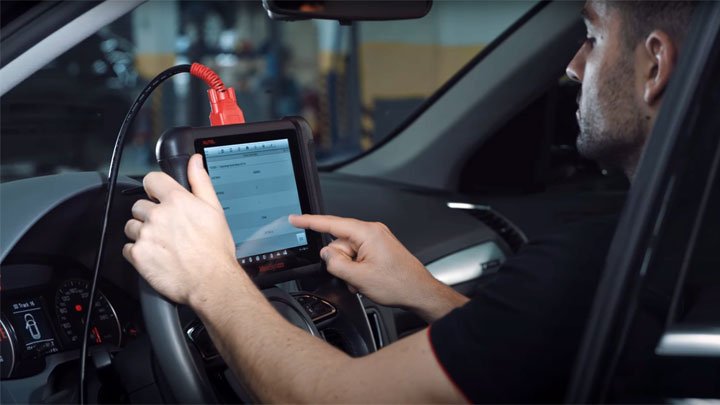Comprehensive Guide to Door Lock Repair: Ensuring Security and Functionality
Door locks play a vital function in securing homes and services, supplying peace of mind and safeguarding valuable possessions. However, in time, door locks may experience breakdowns or break due to different elements. This short article explores the common issues associated with door locks, effective repair techniques, and useful upkeep ideas for guaranteeing their longevity and functionality.
Comprehending Door Lock Types
Before delving into repair approaches, it is necessary to comprehend the various kinds of door locks. Each type may provide unique concerns requiring various techniques to repair. The most common door lock types consist of:
| Lock Type | Description | Common Issues |
|---|---|---|
| Deadbolts | Bolt that extends into the door frame for security. | Sticking, problem turning, misalignment |
| Knob Locks | Cylindrical lock found on doors. | Loose knobs, stuck key, broken springs |
| Lever Handle Locks | Lever-operated locks frequently found in business areas. | Deal with looseness, lock cylinder concerns |
| Smart Locks | Electronic locks controlled through app or keypad. | Connectivity concerns, battery failure, software glitches |
Typical Lock Problems and Repair Techniques
1. Sticking or Jammed Locks
Signs:
- Difficulty turning the key
- Key gets stuck
- Lock feels stiff
Repair Steps:
- Lubrication: Apply a graphite-based lube to the keyhole and key mechanism. Avoid oil-based lubricants, which can attract dirt.
- Modification: Check if the door or lock is misaligned. Adjust the screws or hinge positioning as essential.
- Cleansing: Remove dirt and debris from the lock cylinder utilizing compressed air or a clean fabric.
2. Loose or Wobbly Knobs and Handles
Symptoms:
- Knobs or handles fall out of location
- Extreme movement when turning
Repair Steps:
- Tightening Screws: Using a screwdriver, tighten the screws that hold the knob or handle in place.
- Replacing Washers: If components are worn out, consider replacing washers or internal parts specific to the lock type.
3. Broken Key Issues
Symptoms:
- A key becomes stuck within the lock
- The key breaks off in the cylinder
Repair Steps:
- Retrieval: If a key breaks off, utilize a set of needle-nose pliers to carefully draw out the piece from the lock.
- Key Replacement: For severely harmed keys, get a duplicate or rekey the lock to guarantee security.
4. Misaligned Locks
Signs:
- The door does not close effectively
- Lock does not engage with the strike plate
Repair Steps:
- Adjust Hinges: Use a screwdriver to tighten or rearrange hinges.
- Straighten Strike Plate: If the lock bolt does not associate the strike plate, think about moving the plate slightly to accommodate the lock.
5. Smart Lock Malfunctions
Symptoms:
- Lock stops working to react to keypads or mobile phone apps
- Connection issues
Repair Steps:
- Battery Check: Replace the batteries within the smart lock if it shows indications of power failure.
- Software Update: Check for firmware or software updates through the lock maker's application.
Preventive Maintenance Tips
Preserving door locks can prolong their lifespan and decrease the probability of breakdowns. Consider the following ideas for reliable lock upkeep:
- Regular Lubrication: Apply graphite-based lube every six months to keep internal parts moving efficiently.
- Check Regularly: Periodically examine locks for any indications of wear, misalignment, or damage.
- Safeguard Against Weather: For exterior locks, think about utilizing weather-resistant locks and make sure that they are routinely cleaned to remove harsh elements.
Frequently asked question Section
1. How often should I alter my door locks?
It is recommended to alter your door locks whenever you move into a new home, experience a burglary, or your present locks reveal considerable wear. automotive key replacement can likewise assist prompt replacement.
2. What can I do if my lock is frozen throughout winter season?
Utilize a lock de-icer that is specifically developed for this situation. Applying heat (like a hair clothes dryer) may also assist, however be cautious of damaging the lock.
3. Can I repair a lock myself?
Numerous minor lock concerns such as lubrication, tightening screws, and adjustment can be dealt with DIY. Nevertheless, if the issue is severe or needs a lock rekeying, expert assistance might be essential.
4. When should I call a locksmith?
If your efforts to repair the lock fail or if you discover yourself locked out, it is best to speak with a professional locksmith for assistance.
Investing time in understanding and performing door lock repairs can substantially improve the security and functionality of your locks. Acknowledging common problems and proactively addressing them, while including preventive upkeep practices, can ensure that your door locks remain reputable for years to come. Must problems continue or escalate, professional locksmith services are always readily available to safeguard your security needs.

